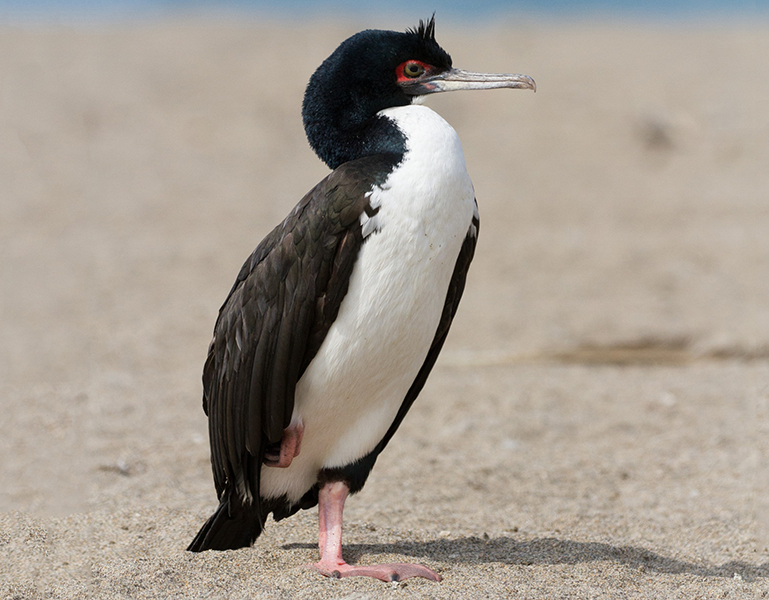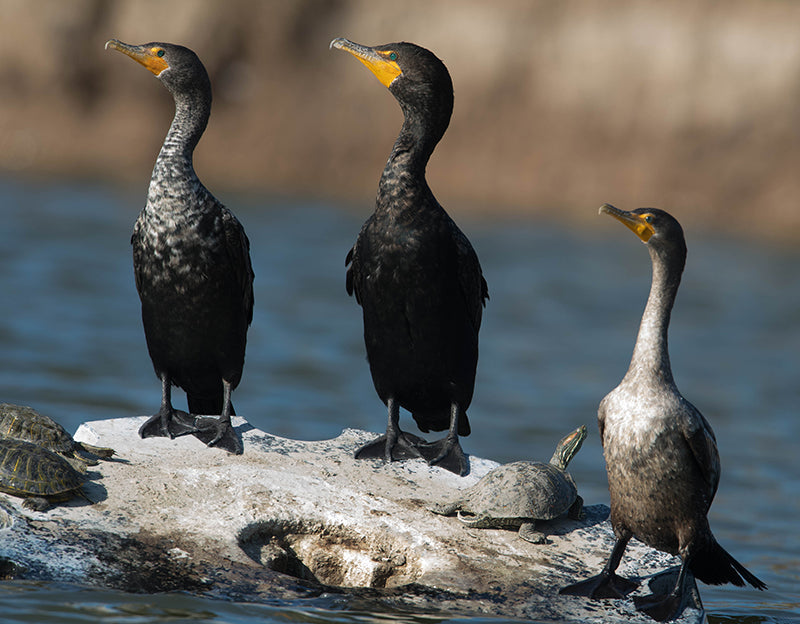Cormorants
| Order: SULIFORMES - Family: PHALACROCORACIDAE |
| 34 Species currently existing - 2 in region + 1 vagrant |
These birds are known for their diving abilities and characteristic long necks that they extend in an S-shape while swimming. Here are some key points about cormorants:
Appearance: The Cormorants have long, flexible necks and sharp, hooked bills that they use to catch fish underwater. Their slender bodies and streamlined shapes help them navigate through water with agility. Cormorants typically have dark plumage, often black or dark brown, which helps them absorb heat and stay warm in cold water. Some species have white patches on their throats or chests. Cormorants have webbed feet that aid in swimming and diving. Their feet are set far back on their bodies, making them efficient swimmers.
Habitat: Cormorants inhabit a variety of aquatic habitats, including coastal areas, estuaries, lakes, rivers, and wetlands. They are adaptable birds found worldwide, except in polar regions. Cormorants are piscivorous birds that primarily feed on fish. They dive underwater to pursue and capture fish using their sharp bills and agile swimming skills.
Diving Abilities: Cormorants are proficient divers and can stay submerged for significant periods while searching for prey. They propel themselves underwater using their powerful legs and webbed feet.
Behavior: Drying Wings: After diving, cormorants can be seen perching with their wings outstretched to dry. Cormorants have less preen oil than other waterbirds, which helps reduce buoyancy for more efficient swimming but requires them to dry their feathers often. Many cormorant species nest in large colonies on offshore islands or cliffs. They build nests using sticks, seaweed, and other materials and may return to the same nesting sites year after year.
Reproduction: Egg-laying and Incubation: Cormorants typically lay 3-4 eggs in their nests, and both parents take turns incubating the eggs. The incubation period varies depending on the species. Both parents participate in feeding and caring for the chicks once they hatch. Cormorant chicks grow rapidly and are fed regurgitated fish by their parents.
Cormorants can sometimes come into conflict with fishermen as they compete for fish. In some regions, cormorants are seen as pests and may be subject to control measures to protect fish stocks.

Guanay Cormorant
Leucocarbo bougainvilliorum
Spanish Name: Guanay
Size: 29 in | 74 cm
Habitat: Humboldt current.
Height: Sea level
Photo: © Cullen Hanks eBird S31144185 Macaulay Library ML 35238931

Double-crested Cormorant
Nannopterum auritum
Spanish Name: Cormorán Orejudo
Size: 33 in | 84 cm
Habitat: San Andrés and Providencia Islands.
Height: Sea level up to 100 m
Photo: © Eduardo Lago V.

Neotropic Cormorant
Nannopterum brasilianum
Spanish Name: Cormorán Neotropical
Size: 25 in | 64 cm
Habitat: Freshwater and coastal areas.
Height: <3400 m
Photo: © Luis A. Materon

